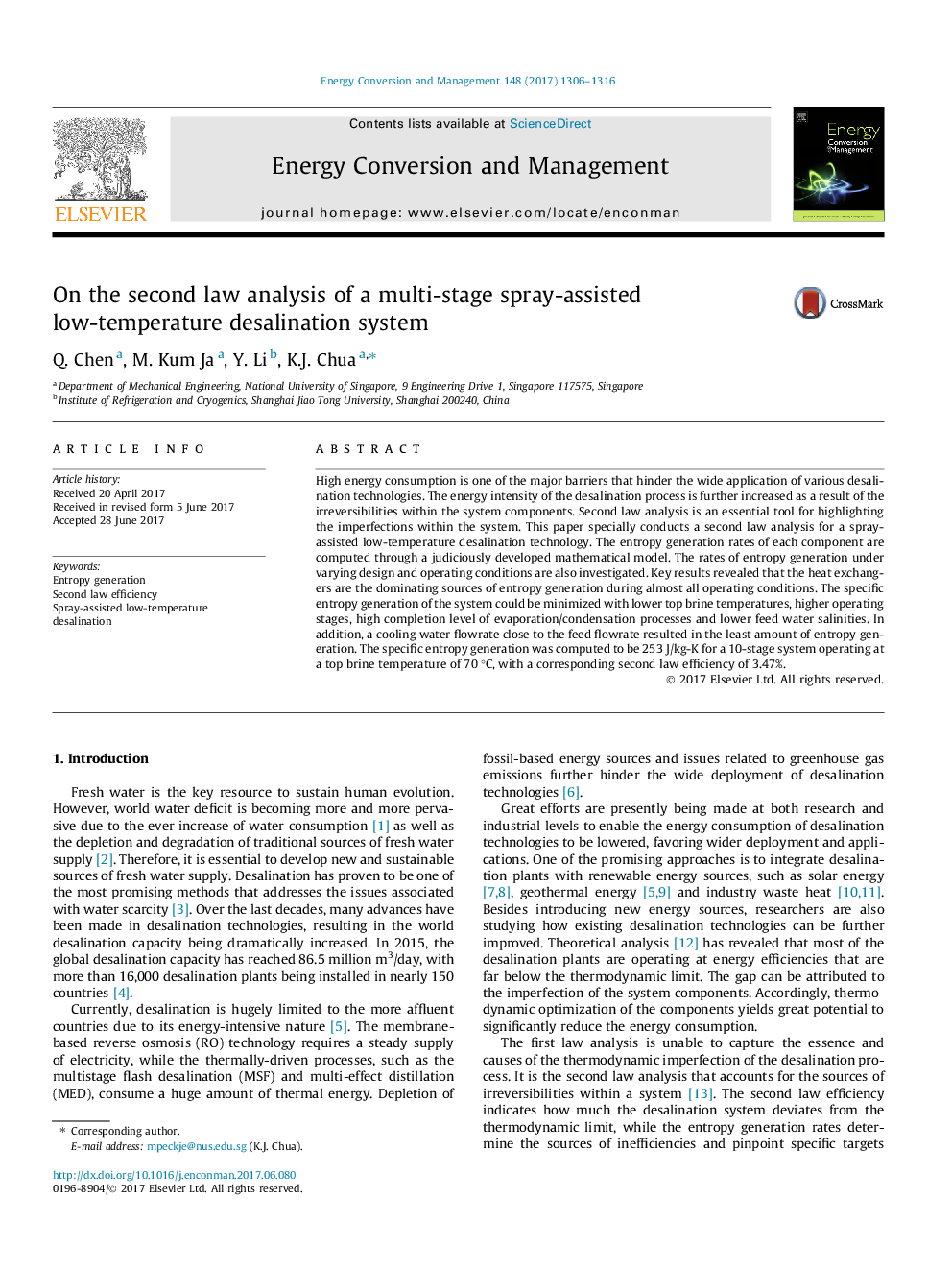| Article ID | Journal | Published Year | Pages | File Type |
|---|---|---|---|---|
| 5012604 | Energy Conversion and Management | 2017 | 11 Pages |
Abstract
High energy consumption is one of the major barriers that hinder the wide application of various desalination technologies. The energy intensity of the desalination process is further increased as a result of the irreversibilities within the system components. Second law analysis is an essential tool for highlighting the imperfections within the system. This paper specially conducts a second law analysis for a spray-assisted low-temperature desalination technology. The entropy generation rates of each component are computed through a judiciously developed mathematical model. The rates of entropy generation under varying design and operating conditions are also investigated. Key results revealed that the heat exchangers are the dominating sources of entropy generation during almost all operating conditions. The specific entropy generation of the system could be minimized with lower top brine temperatures, higher operating stages, high completion level of evaporation/condensation processes and lower feed water salinities. In addition, a cooling water flowrate close to the feed flowrate resulted in the least amount of entropy generation. The specific entropy generation was computed to be 253 J/kg-K for a 10-stage system operating at a top brine temperature of 70 °C, with a corresponding second law efficiency of 3.47%.
Related Topics
Physical Sciences and Engineering
Energy
Energy (General)
Authors
Q. Chen, M. Kum Ja, Y. Li, K.J. Chua,
